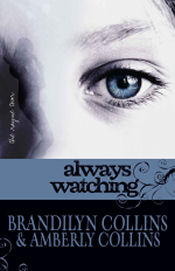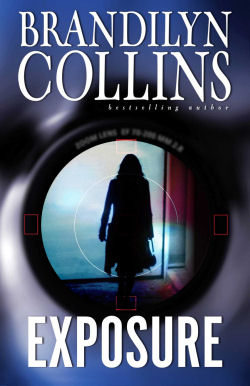|
Authors
tend to be aware that if they’re writing in first person, all thoughts
and narrative need to be in the character’s voice—not in the author’s
voice. But what about when we’re writing in third person? Third person
has various forms, the most prevalent today being “close third.” In
this point of view (POV) the reader resides within the character’s
head, seeing, feeling, thinking along with the character. The only
voice closer in intimacy than close third is first person.
 If you’re writing in
close
third, I advocate allowing each POV
character’s voice to come through over your own author’s voice. If your
book has six POV characters, then each of those six will sound
different. Each character will describe things differently, perceive
differently, based on his or her experiences. But allowing the
character’s voice to rise above your own is a challenge. In my writing,
the character’s voice becomes more distinct in scene rewriting. My
first drafts sound too much like me. If you’re writing in
close
third, I advocate allowing each POV
character’s voice to come through over your own author’s voice. If your
book has six POV characters, then each of those six will sound
different. Each character will describe things differently, perceive
differently, based on his or her experiences. But allowing the
character’s voice to rise above your own is a challenge. In my writing,
the character’s voice becomes more distinct in scene rewriting. My
first drafts sound too much like me.
So how to rewrite to allow your
character’s voice to shine through?
The
best teaching on this issue is by example. Following is a first draft
scene from Crimson
Eve (third in the Kanner Lake series), told in the
POV of Tony, the antagonist. Tony is a hit man, a street-wise guy
around forty who works for some powerful people. Although he’s not
educated past high school, he’s learned refinement skills enough to
pass himself off as a businessman when necessary. He’s also a father
and husband who’s dedicated to his family. In this scene, Tony has
broken into a home at night to check out a few things about his
intended target:
Tony
sidled from dark kitchen to living room to
hall toward the bedrooms, his heightened senses attentive to his
environment. He could tell a lot about a woman from the house she kept.
When he’d first slunk through the house—during daylight hours—he picked
up a feeling of order, one without rigidity but bordering on coolness.
Each room flowed into the other, creating an aura of space in the
compact home. Everything seemed in its place, no dishes in the sink,
counters free of clutter. A few plants could have warmed up the room
considerably. In the living room he saw a light blue sofa and matching
chairs grouped around a white-tiled fireplace, three magazines stacked
on a glass-topped coffee table. Built-in shelves held knick knacks and
books, but few photos. The only pictures on the walls were art prints.
Nothing commemorating the life Carla Radling had lived, her hobbies,
her travels, her dreams.
Tony couldn’t quite put his finger on what it was, but something about
the place reflected the sass that he’d seen in his target. Maybe it was
the brazenness of the scattered bright solid color pillows—scarlet
against the blue of the couch, sunny yellow on the chairs. Or the bold
fluidity of the house, as if walls were an encumbrance to be avoided.
Now passing through a second time, Tony was struck by the difference
between this house and the one his wife, Robyn, kept. What a difference
a child’s presence made. Their home was warmed by familiar
clutter—Timmy’s shoes askew on the kitchen floor, toys on the crushed
knap of the carpet before the TV, the smells of cookies and peanut
butter and grubby sock . . .
|
Does
this voice sound like that of the man I described above? Would a man
like Tony think such words/phrases as creating an aura,
askew, encumbrance, warmed by familiar clutter, bold fluidity?
Not at all. Those are words in my author’s voice, not Tony’s. Coming
from him, they sound stilted. The scene is also weighted with too many
words. The rhythm doesn’t fit Tony’s quick, efficient scoping out of
the house in the dark. But the wordiness took care of itself when I
fixed the voice to sound more like Tony:
Tony
moved through the dark kitchen, senses
prickling. He could tell things about a person from her house. This one
had a feeling of order and coolness. Everything in its place, no
clutter. In the living room sat a light blue sofa—in the daylight he’d
seen its color. Matching chairs grouped around a white-tiled fireplace,
magazines stacked on a glass-topped coffee table. Knick knacks and
books on built-in shelves. No photos. Art prints on the walls. Nothing
commemorating Carla Radling’s life.
Who was this woman?
His own house was homey. Timmy’s shoes on the kitchen floor, toys in
front of the TV. The smell of cookies and peanut butter . . .
Less “refined”? Yes. But more in
keeping with the character.
You may find yourself tempted to
write using the more skillful
phrase, the artful turn of words. But whose voice is that—the
character’s or yours? Admittedly, some authors do very well by always
writing in their own voices. That voice, then, is what readers hear
most in the novel, not the voices of the characters. If you’re used to
writing like that, I urge you to try something different. Allow your
characters’ voices to take over. You might find your characters
becoming more real, more believable than ever before.

|